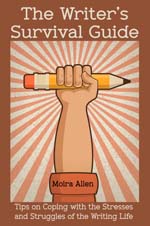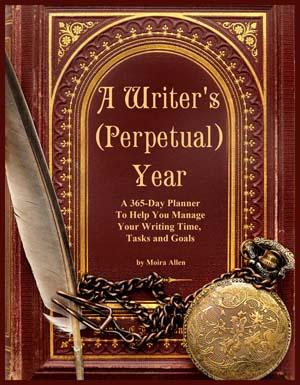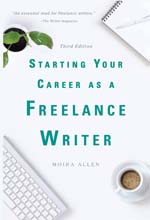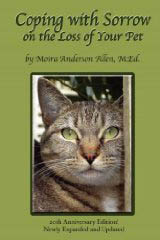 Your Guide to a Successful Writing Career
| |||
|
by Marg Gilks
I hate writing synopses, too. I used to hate them because the ones I wrote sucked all the life from the novel, reducing it to bare-bones sentences that did nothing to capture the depth of the novel itself. Now I hate writing synopses because they are much more difficult to write than the novel ever was. It's not easy distilling 100,000-odd words into a few pages. But it's important. The synopsis is the most important part of your submission package and, as such, it has to be developed and sweated over and polished with the same attention you devoted to the novel itself. Along with the cover letter, the synopsis is what sells the editor on the manuscript. If they don't see anything they like in the synopsis, they won't even glance at your chapter samples. The synopsis is your sales pitch. Think of it as the jacket blurb for your novel (the synopsis is often used in writing this, and by the publisher's art and advertising departments, if the novel is purchased), and write it as though you're trying to entice a casual bookstore browser to buy the novel and read it. Which isn't too far from actuality. "Okay," you say, "you've sold me. This is something I have to do, and do well. But how?"
Rather than being daunted by the enormity of such a task, break it down. Do it step by step. The first step, of course, is realizing that you're going to have to write a synopsis -- if you intend to market your novel, that is. The best time to realize this is just before you sit down with your manuscript for the final reading preparatory to declaring the thing completed. Sit down to that final reading with a pen and paper beside you. As you finish reading each chapter, write down a one- or two-paragraph summary of what happened where, and to which character, in that chapter. Notice any themes running through your chapters as you're reading? Symbolism you didn't realize you'd woven through the story while you were slogging away at the computer for all those months? (The subconscious mind is a wonderful thing.) Take note of themes, too. You may just discover your one-line story summary that agents and editors like so much, if you didn't know what it was before. Or even if you thought you knew what it was, before (surprise, says the Muse, you were wrong). What you will have when you are done is a chapter-by-chapter novel outline, what I call my author's outline. This is pretty dry reading, and since chapter-by-chapter outlines seem to have fallen out of favor with editors and agents, this will likely remain one of your most valuable writing tools, and that's about it. Don't throw this away when you've done your synopsis, either. You may know the story intimately now, but you do forget details over time. You may decide to revise the novel in the future, and this outline will help you. I've used mine to make sure I'm not duplicating character names from one project to the next. (The subconscious mind can also booby-trap you.) Reading an outline is much easier than leafing through or rereading an entire novel. Anyway. There is an immediate use for that outline. What you are doing, basically, is distilling the story down into smaller and more manageable packages, step by step. So, you pinpoint the most important plot points in that outline, and you put them into a synopsis. Notice I said the most important points. We're talking about only those events and motivations that moved the story forward in a major way. We're talking about only the most important characters, the ones your reader will ultimately care about, not the bit players. Right now, we are striving for bare-bones. "Yup," you say, "that's bare-bones, all right, and just as boring as ever." Yes, it is. It's also probably still too long, but don't worry about that right now.
Now I want you to envision one or two things while you rework that synopsis:
How can you make your synopsis unique, exciting? Start with the main character and his or her crisis. Include snippets of dialogue or quote briefly from the novel itself. Don't neglect to reveal the character's emotions and motivations, those points that explain why a character does something, but keep it brief. If the setting is exotic, inject a taste of it into the synopsis with a brief paragraph. This includes any background information that is absolutely necessary for the reader to understand the story. Build excitement as you near the conclusion of the story summary by using shorter sentences and paragraphs. The synopsis is a sample of your writing; it is a taste of what reading the actual novel will be like, so give it your all. Don't forget that one- or two-sentence story line, or the theme of the story that you discovered. It should go in your synopsis, or in your cover letter. Editors and agents like having this distillation; not only will it pique their interest, but it's something they can use when presenting the novel to the buying board. It's also something you can use, the next time someone politely asks you, "What's your novel about?" "Wow," you say at last, "this is pretty good! It reads almost as good as the novel!"
But wait, there's more. Now we get to the "thou shall and shalt nots." First, acceptable length. One guideline is to allow one synopsis page for every twenty-five pages of manuscript, but even that could be longer than most editors and agents want to see. Most editors and agents, busy people that they are, prefer short synopses -- two to ten pages. The busier ones like five pages at most. I personally consider two pages ideal, and have distilled synopses down to a single tight page. If you've written a thoroughly intriguing synopsis, don't worry if it's ten or more pages long -- but it had better be gripping. Edit, edit, edit, if you have to! Always keeping in mind that the synopsis must remain interesting and supply the necessary information. Yes, this is the hardest part. Don't know what to cut? Lose the adjectives and adverbs; keep the motivation and "flavor" of the story. You have to tell the entire story in your synopsis. Don't send the first three chapters and then start the synopsis at chapter four. Don't leave out the ending, hoping to entice the editor or agent to request the full manuscript in order to find out what happens. What they will do is decide you're an amateur. No matter what tense your novel was written in, the synopsis is always written in present tense (Jerry goes to the bullfight as opposed to Jerry went to the bullfight.) Format: there seems to be disagreement as to whether you should single- or double-space your synopsis. To be on the safe side, double-space; it's easier to read. In terms of layout, format your synopsis much as you did your novel, or a short story. The first time you use a character's name in the synopsis, type it in CAPITAL letters. Do this only the first time. Avoid confusion by referring to a character the same way throughout (not "Dr. Evans" the first time, "Jerry" the next, and "the doctor" another time). It's also advisable to identify which character(s) is the point of view character by typing "(POV)" after the first instance of the character's name. Yes, writing a good synopsis is a lot of work, but think of it this way: not only are you creating a vital marketing tool, but you're honing your writing skills at the same time.
This article may not be reprinted without the author's written permission. Marg Gilks' short stories, poetry, and articles have been appearing in newspapers, newsletters, magazines, and e-zines since 1977. She considers writing fiction, especially sf/f, the ultimate form of escapism -- in what other field can you create your own universe? Contact her with feedback and queries through Scripta Word Services, her freelance editing business: http://www.scripta-word-services.com/. |
| ||
| |||




